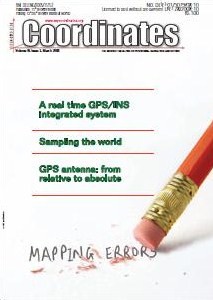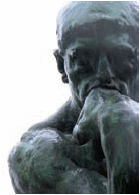
Brazil to deepen Space Cooperation with China
According to Carlos Ganem , head of the Brazilian Space Agency, Brazil will deepen cooperation with China in the field of space technology. The jointly-developed satellite helped Brazil better monitor the deforestation in the Amazon region, which can provide useful information on Brazil’s environmental protection efforts. www.spacedaily.com

“FLAIR Act” introduced in US House
A bill to develop a current, accurate Federal cadastre to inventory all Federal real property has been introduced in the U.S. House of Representatives, earning praise from MAPPS, the national association of private geospatial firms. The FLAIR Act authorizes the Department of the Interior to not only compile an inventory of Federal land ownership but also provides for conducting an inventory of current inventories to eliminate duplication and save tax dollars. www.MAPPS.org.

Volume IV, Issue 3, March 2008
Zip
Mapping errors
Dr Beena Chintalapuri, V Raghu Venkataraman
A real-time GPS/INS integrated system
Yong Li, Peter Mumford, Chris Rizos
Science of Interoperability
David Schell, Dr D R F Taylor
Google exposed!
Sampling the world
Rainer Mautz
GPS antenna: from relative to absolute
Aristidis Fotiou, Christos Pikridas, Miltiadis Chatzinikos
My Coordinates
EDITORIAL
News
INDUSTRY …

Positioning by GPS can be derived today with a precision of a few millimeters. A GPS receiver determines the distance between the electrical phase center of its antenna and the phase center of a GPS satellite’s transmitting antenna as a pseudorange or a carrier phase observation. It is well known that the phase center of the antenna is not a stable point.

How would the world look like if you were standing on an arbitrary point on earth? It is not easy to imagine, how a randomly chosen location would look like since most pictures that come into our mind are somewhat special: our home, Piccadilly Square, a picture from National Geographic, or a photo that had been taken on top of a famous summit.

Filipo Rodriguez, Gian Paolo Plaia
Application of cognitive psychology for reduction of mapping errors
Human factors contributing to mapping errors made by operators working on digital mapping systems were studied from Cognitive Psychology perspective to evolve suitable strategies to reduce errors.
Mapping errors
Study area
Large scale topographic maps of better than 1:5000 scale with 1 to 2 m contours are …

Study on Galileo services consolidation
The European GNSS Supervisory Authority has issued a call for tenders for a study on Galileo service consolidation. The general aim of the project is to conduct a critical review of the current Galileo integrity baseline concept, based on the evolution of integrity requirements for Galileo, and receive proposals for new global Galileo integrity concepts. For details visit: http://ted.europa. eu/udl?uri=TED:NOTICE:039425- 2008:TEXT:EN:HTML

Iran’s space ambitions ride on Safir
Iran has successfully recently launched a sub-orbital rocket called Safir (Envoy). The payload that was launched by Safir sent real-time data back to earth from about 250 km. Next, a satellite called Omid (Hope) will be placed in a near-polar orbit satellite, at an altitude of 650 km and will pass over Iran six times every 24 hours.

Jharkhand state in India goes online at the grassroots level
Common service centres would be set up at each of the 4,562 panchayats in the state by soon where villagers can avail services like registration of certificates, filing commercial taxes among others. According to R. S. Sharma, Secretary of IT, 3000 of such centres has already been set up. Use of GIS for digital mapping of districts shall also be done to locate the villages and also to calculate
the amount of rainfall an area receives in a year to facilitate irrigation. Water harvesting mapping using GIS shall also be emphasised. www.telegraphindia.com/











 (5.00 out of 5)
(5.00 out of 5)